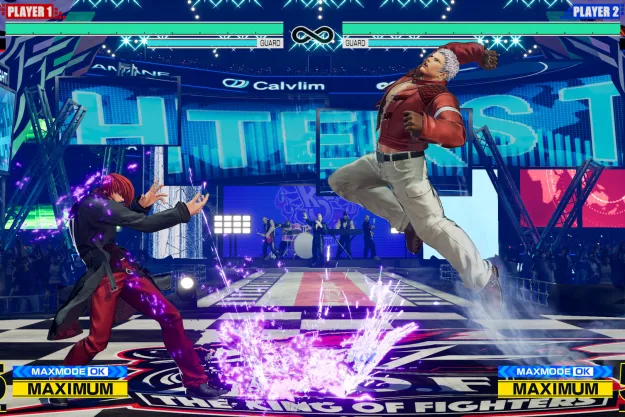Paradoxical as it sounds, every time a new generation of console hardware arrives, an interesting thing happens in the world of interactive entertainment: Gamers stop buying games.
We’re already seeing the same drama that played out when the PSOne and Dreamcast first dropped recreate itself; only now, it’s the Xbox 360 that’s turned audiences into penny-pinching misers. And while Microsoft’s partly to blame for its own failings ? product shortages, slipping release dates and an inability to connect with foreign audiences have all dampened sales projections ? subtler forces are also at work.
Publishers are increasingly gearing up for the release of next-generation titles, which (if insiders are to be believed) will cost upwards of $10 million apiece to make. As a result, their product lineups for current-generation machines grow ever sparser, with more manpower and capital being poured into tomorrow’s potential hits. What few titles are debuting for these platforms, at least through the first half of the year, are largely what most would consider throwaway outings as well.
That’s not to say games like BLACK (an ultra-destructive first-person shooter creator Criterion so eloquently describes as “gun porn”) and genre-busting fantasy adventure The Elder Scrolls IV: Oblivion won’t find a waiting fan base. Nor should underground favorites such as old-school arcade throwback Exit for PSP or soccer superstar Winning Eleven 9 fail to get fans riled up. It’s just that if you’re a casual enthusiast, chances are, you won’t be queuing up by the millions outside Dweebs ‘R Us for the release of Arena Football or Commandos: Strike Force.
Black
The Elder Scrolls IV: Oblivion
Nor is anyone besides hardcore gamers truly interested in dropping $400 on a new machine that’s notable mostly for HD graphics and online functionality, when it’s really just a small step forward technologically. What’s more, the Xbox 360 faces strong competition from not one, but two competitors before the year is out: Sony’s PlayStation 3 and Nintendo’s Revolution. Given that Sony Computer Entertainment president and CEO Ken Kutaragi has already gone on record stating that the former, at least, will be “expensive,” who can blame couch potatoes for playing it safe?
Adopting a wait and see attitude is one’s most sensible option at this point, after all; truth be told, it’s not like anybody really needs to invest in more than one supercharged gaming system. Unless that is, of course, engineers come out with an add-on that turns these devices alternately into a missile-spewing giant robot you can take for a ride down Main St. or silicon-enhanced, bubble-headed sexbot.
A lack of awe-inspiring software on these new platforms in the coming months is further guaranteed to wreak havoc on consumer confidence. Sure, Dead or Alive 4 is great, but let’s face facts? are you really that excited about blowing a day’s pay on GTA clone Saint’s Row or all-female wrestling game Rumble Roses XX? Even assuming that developers learn to properly harness the power of the Xbox 360 before year-end, it’ll still take another 12-14 months before they’re up to speed on competing consoles. Oh, and the fact you’ll be asked to hand over $10 more on average for each title (typical next-gen game price: $59.99)? yeah, just another kick in your joystick and buttons.
Dead or Alive 4
All of which adds up to a swirling vortex of suckitude that’ll plague the industry through 2006 and well into ’07. I don’t need Miss Cleo to help get a read on this one either? we’ve all witnessed the process repeat itself time and again since before Trip Hawkins was tripping himself up with the 3DO. The moral of the story: Perhaps the answer is that we, as gamers, shouldn’t be so quick to rush into the so-called next-generation. As Sony’s frequently suggested, a 10-year lifecycle for any given system could be just what the market needs.
Developers would have time to maximize the power of the tools at their disposal, creating better product that’s more fiscally sustainable over a long-term period, pleasing gamers and shareholders alike in the process. Publishers could continue to churn out a steady stream of content for any given medium, even during transition years, as over such a long period, systems would surely gain traction with a larger audience. Manufacturers gain the option of benefiting from greater economies of scale, and can pass the savings earned with each additional console that rolls off the line onto consumers. As for end-users, they’d get higher quality wares at a lower cost ? and not have to make asinine decisions about which new machine to buy every five years.
Don’t take these sentiments the wrong way; grumpy as I sound, it’s only out of love for the industry. And, for that matter, in hopes that its leaders will finally take note of the status quo, as a self-fulfilling prophecy dating back to NES and Genesis era once again comes to fruition. Much like you, I’m perfectly happy to pony up a few bucks here and there for the odd Kingdom Hearts II, Hitman: Blood Money or Fight Night Round 3.
Fight Night Round 3
But until someone starts explaining why it’s worth spending a month or more’s worth of groceries on a souped-up GameCube, hell? I’m saving my hard-earned cash for more cheap beer and Girls Gone Wild: Bangladesh DVDs too.







